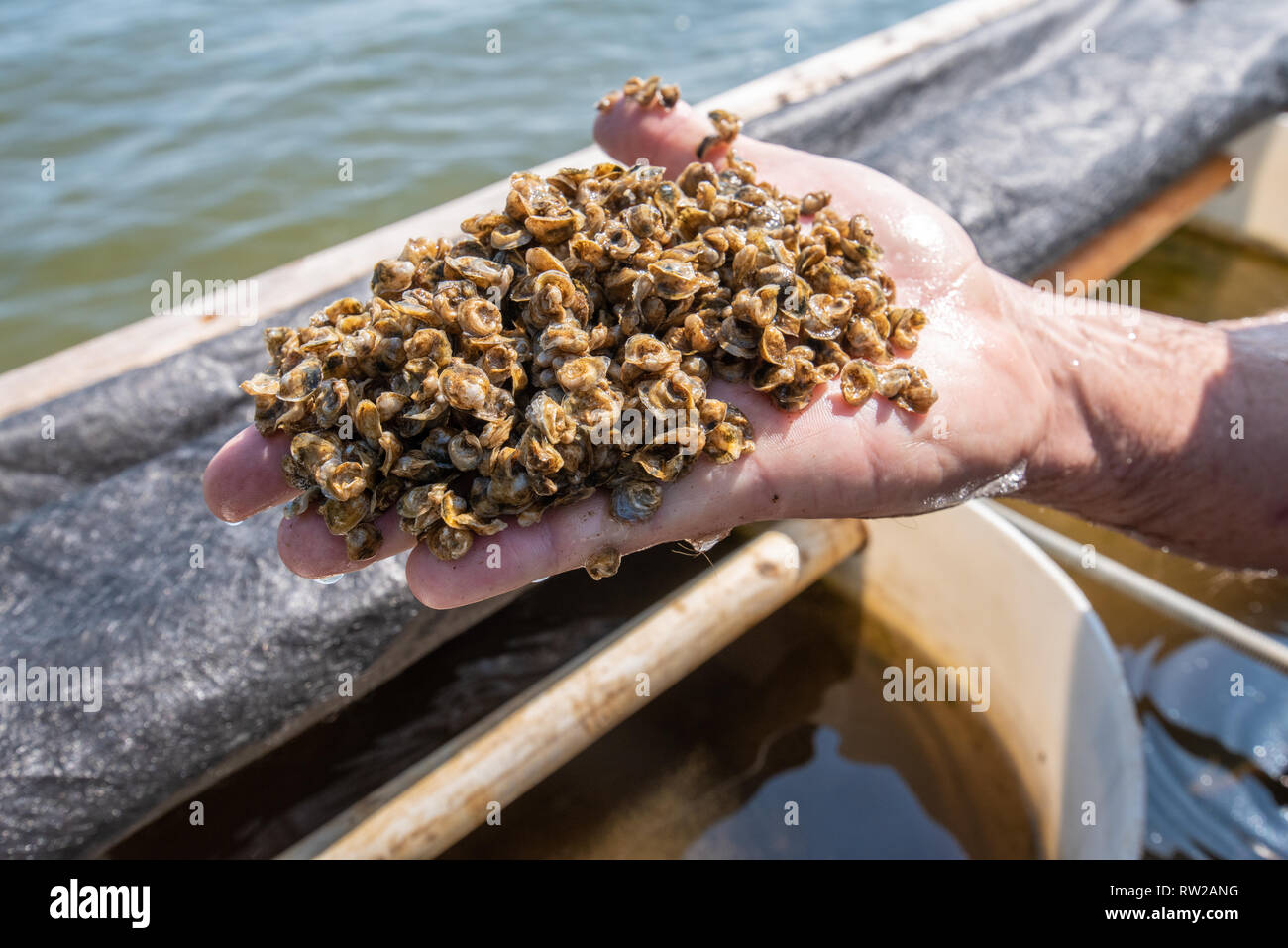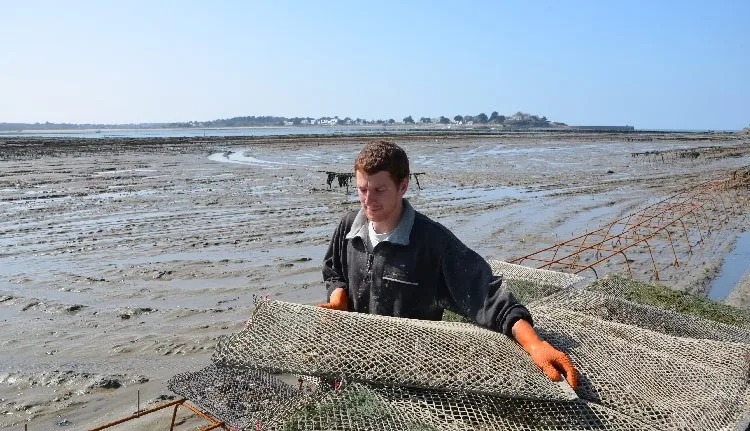

With careful husbandry the oysters are then left to grow for approximately 18 months using the intertidal technique, which is exactly how nature intended for them to be grown. Field and laboratory observations on the predation of spat and juvenile clams by Carcinus maenas suggest that in Atlantic waters this crab is capable of decimating spatfalls (Spencer et al., 1991,1992). Identification of a newly described OsHV-1 var from the North Adriatic.

gigas have been reported from Dutch estuaries. one shipment of oyster seed (28,580 liters species not identified destinations. So far no veined whelks or flatworms predating on C. To produce Kaipara Oysters™, our farming is based on collecting naturally occurring spat (oyster seed). The veined whelk Rapana venosawas introduced to several areas over the world (Black Sea, Aegean Sea, Adriatic Sea, Uruguay, the eastern USA, north-western France) and was found in the southern North Sea in 2005 (Kerckhof et al. This departure broke the mould, and remains truly a world’s first for the global aquaculture industry. In following our philosophy to minimise the human footprint in the pristine Kaipara waters we elected to build our 76-hectare farm, the largest oyster farm in the country, only from eco-friendly materials. Kaipara Oysters™ have combined unprecedented aquaculture techniques and exemplary farm and water management principals to establish what we believe will become the new benchmark for sustainable aquaculture production. Special Occasion Dining, Romantic, Groups, Business meetings. The company’s product range also comprises Adriatic oysters and meagres, according to data from Cromaris.With an abundance of marine life, the untouched, nutrient-rich waters of the Kaipara Harbour, located in the sparsely populated northwest region of New Zealand’s North Island, offered the ideal location to fulfil our family’s ambition of creating the world’s most sustainable oyster farm. Cromaris claims it is one of the ten largest sea bass and sea bream processors in Europe. Oysters are a type of shellfish that live in brackish and saltwater bays, estuaries, and tidal creeks. However, it works with so many local artisans its virtually guaranteed that plenty of oyster boats, Chesapeake water scenes, sailboats, and oysters themselves appear in various artistic expressions on its walls.

About 70% of the firm’s exports are supplied to other EU member states. The European at oyster, Ostrea edulis, is a keystone species suffering major population declines due to overshing, habitat loss and parasite diseases. This active art center in the charming village of White Stone isn’t devoted exclusively to the oyster, per se.

This will include raising the capacity of its hatchery in Mala Lamjana, an island on the Adriatic Sea, and opening two new fish farms, according to the information obtained by local news site Liderpress.hr.Įstablished in 2009, Cromaris is part of the country’s Adris Group, a multi-industrial conglomerate. Meanwhile, Cromaris aims to invest about HRK 370 million (€49.8 million) to increase its output capacity by 2018. The company is operated by a workforce of about 320 employees, and it processes sardines, tuna, hake, mackerel, and it breeds sea bass, sea bream and mussels, among others. Sardina says its product portfolio consists of canned fish, fish pâté, frozen fish and fresh aquaculture products as well as fishmeal and fish oil. The project allowed the company to open a new waste treatment facility, the company’s management told local daily Poslovni Dnevnik.Ĭurrently, Sardina exports as much as 80% of its output to various foreign markets in Europe, the US, Canada, Australia, and Russia, to which it was recently allowed to resume export sales. Sardina recently completed an investment of some €30 million to modernise its fish processing plant in Postira, on the Croatian island of Bra?, which is fitted with a surface of more than 12,000 square metres.


 0 kommentar(er)
0 kommentar(er)
